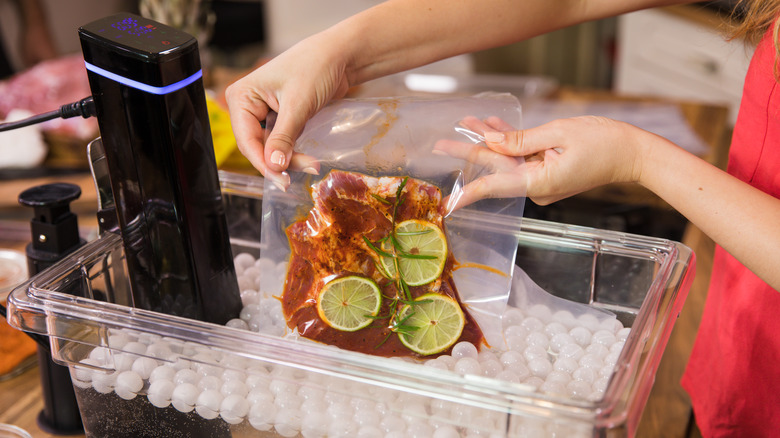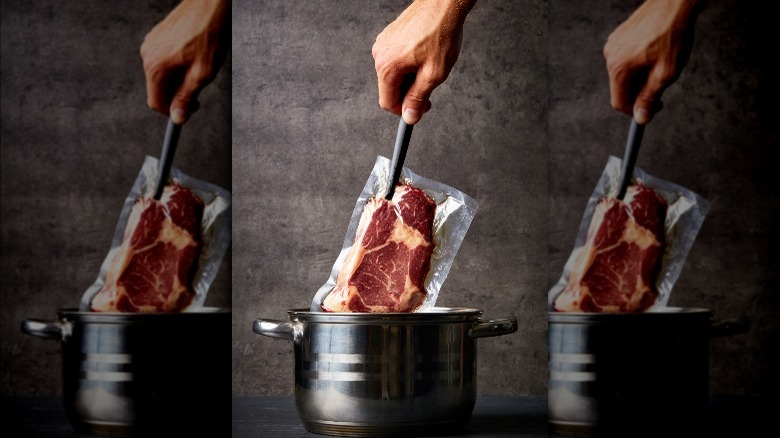The Real Reason Sous Vide Cooking Has To Happen In A Vacuum
If you're pondering the question in this story's headline, the pedantic answer is that sous vide cooking must occur in a vacuum because "sous vide" means "under the vacuum." Without the vacuum you have no vide. The actual answer, however, is that the vacuum is essential to the cooking process sous vide employs.
Allrecipes describes the process as "a low-temperature cooking method where food is vacuum-sealed and slowly cooked in a water bath." The water's temperature will translate to the temperature of the food being cooked in it. This is usually between 125 and 195 degrees Fahrenheit. ScienceDirect details the scientific reasoning for why vacuum-packaging plays such an important part. The removed air means that heat has less of a buffer to enter the food. This allows for the lower temperatures to actually cook the meat effectively. Secondly, the lack of oxygen preserves the food for longer and prevents contamination during the cooking.
The process also retains the flavors of food that would be lost if they were cooked directly in the water. Think about how bland boiled vegetables sometimes taste. So, you really need the vacuum for the whole thing to work.
Is sous vide cooking safe?
Despite having been around for a few decades, sous vide is a recent innovation for the home kitchen. So, people are somewhat concerned when it comes to relying on a vacuum for cooking. After all, the fact that we need to cook a chicken to 165 degrees Fahrenheit for it to be safe has been drilled into us for decades. Heat is healthy, but sous vide must occur at lower temperatures. That doesn't sound good.
For the most part, though, sous vide is a safe way to cook. Lisa McManus, the executive tasting and testing editor for America's Test Kitchen, explained to NPR that the 165-degree rule is to kill the bacteria immediately. At lower temperatures, it just takes longer. The Kitchn goes further, stating that since sous vide controls the cooking temperature with such accuracy, you can leave the food for a few hours at 135 degrees without having to worry about variations.
However, a word of caution should be included. Bon Appétit acknowledges that many supposedly not as bad plastics might release non-BPA chemicals that can mess with hormone activity. That said, the actual amount released was not known. Moreover, America's Test Kitchen told NPR that after testing, they've concluded that the vacuum bags are safe to cook with.

